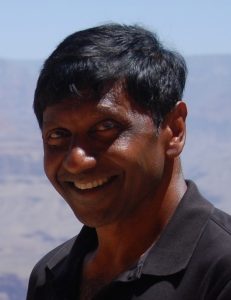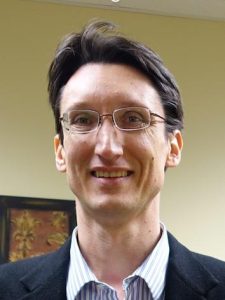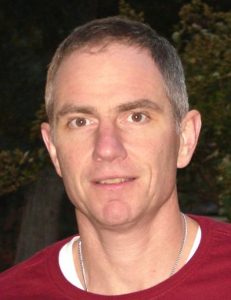Research: Mathematical Biology
Faculty
Current Active Faculty Members

Igor Erovenko
I have been working on projects in different areas of mathematical biology including the evolution of cooperation, game-theoretic models of infectious diseases, and theoretical ecology. The mathematics I use in these projects includes game theory, optimization, ordinary differential equations, and stochastic processes.
 Jonathan Rowell
Jonathan Rowell
My research has been motivated primarily by problems in ecology and evolution, but I also have studied communication and social interactions, language and cultural development, and plant physiology, as well as more purely mathematical interests. My work entails the use of a combination of dynamical analysis, particularly spatial techniques and evolutionary game theory, and numerical simulations. Recent topics of research have included resource and density dependent movement of populations, strategically preserved male mate choice preferences, and the spatial spread of socio-lingual systems undergoing evolution in a contact zone with the focus on dialect arrangements for oblique and paternal learning rules for song birds. My current primary focus is on the population-level consequences of directed movement at the individual level.
 Jan Rychtář
Jan Rychtář
My particular interest lies in the game theory which is a code name for a special class of optimization problems. A typical game theoretical question asks to find a best action of an individual whose success is based not only on its own action but also upon the choices of actions made by others. From the math-biology and modeling perspective most of my work is on phenomena where individuals have competing interests. This is a case of models of stealing behavior where one can see that benefits of stealing depend largely on defending strategy of potential victims but also that benefits of defending depend largely on strategy of potential thieves. The mathematics involved in my work ranges from game theory, ODEs, probability and stochastic processes and graph theory.
 Ratnasingham Shivaji
Ratnasingham Shivaji
Ratnasingham Shivaji earned a Ph.D. in 1981 from Heriot-Watt University, Edinburgh, Scotland, and joined UNCG as H. Barton Excellence Professor and Head of the Department of Mathematics and Statistics in 2011. Prior to joining UNCG he served for twenty-six years at Mississippi State University, where he was honored as a W.L. Giles Distinguished Professor. Shivaji’s area of specialization is partial differential equations, in particular, nonlinear elliptic boundary valve problems with applications in population dynamics. In particular, some of his recent research focus on models describing effects of Allee effect, constant yield harvesting, grazing, and nonlinear boundary conditions due to negative density dependent emigration. His research has been funded by the National Science Foundation (NSF) and by the Simon’s Foundation. Currently, he serves as the PI on an NSF Math Ecology Grant. He has authored over one hundred and thirty research papers. He is a member of the Editorial Board of several mathematics journals. To date, he has directed one postdoctoral student, fifteen Ph.D. students (11 graduates, 4 current), fourteen M.S. graduates and nineteen undergraduate research students (18 graduates, 1 current).
 Clifford Smyth
Clifford Smyth
One of my current projects is on analyzing the effect of vector/host affinity on disease spread. Several unexpected phenomena have appeared in our computerized simulations, including dependence of disease prevalence on host density that runs counter to the existing mathematical models yet matches the behavior of actual biological systems. The focus is on using such evidence to come up with new mathematical models more accurately describing real behavior.
Faculty Involved in the Past

Maya Chhetri
I am interested in the mathematical analysis of single-species or multi-species population dynamics model with diffusion and harvesting.
 Sat Gupta
Sat Gupta
Over my career, I have collaborated with researchers from many fields such as Anthropology, Biology, Education, Marine Biology, Nursing, Public Health Education and Psychology. The current focus of my research lies in the area of Sample Surveys, particularly surveys involving sensitive questions. There are many situations in the medical field where the information to be collected is of sensitive nature. In these situations, there is a greater danger of respondent bias which must be eliminated in order for the policy makers to implement effective disease control programs based on accurate estimates of prevalence and extent of undesirable behavior in a population. An important data acquisition technique that is found to be very effective in such situations is the Randomized Response Technique (RRT). Randomized response models were introduced by Warner (Journal of the American Statistical Association, 1965) to circumvent response bias among survey respondents when faced with confidential or incriminating questions in face-to-face interviews. These models allow a respondent to provide a scrambled response using a researcher provided scrambling device where by the researcher can unscramble the response at the aggregate level but not at the individual level.
 Sebastian Pauli
Sebastian Pauli
I am interested in the automated processing of recordings of animals in the wild. In our current project we are using computer vision techniques to track mice in infrared videos. This makes it feasible to evaluate the information about the behavior of these nocturnal animals contained in thousand of hours of video recordings. See Computer Aided Observation of Behaviors of Nocturnal Animals in the Wild for some of our results.
 Scott Richter
Scott Richter
My main statistical research interests are in the area of nonparametric methods, especially those based on resampling. Recent work has focused on a developing nonparametric analog to the Tukey-Kramer multiple comparison procedure. Multiple testing plays a crucial role in areas such as genetic association studies, where there are often many candidate genes to examine, and thus it is necessary to control the overall error rate. I have also been working to develop multiple Model II regression techniques for modeling relationships when both response and explanatory variables are random. This research has been applied to studying optical properties and the partitioning of the spectral scattering coefficient of ocean waters.





